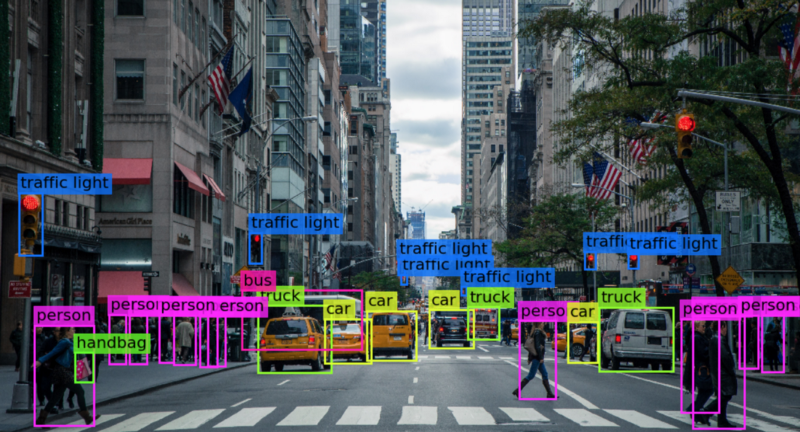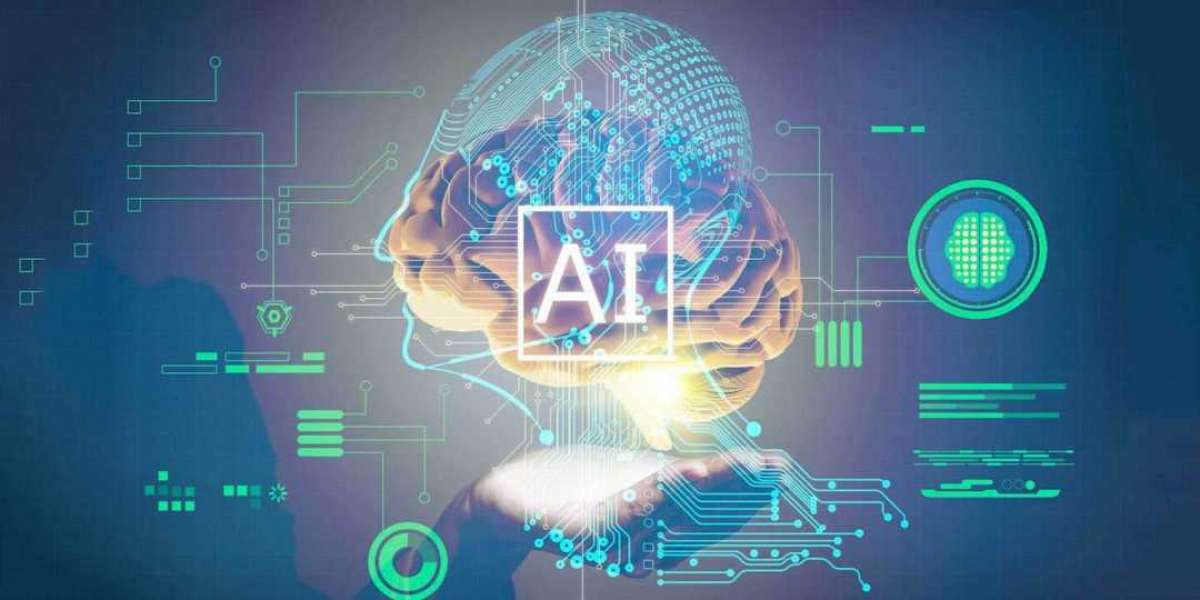Artificial intelligence is a new technical discipline that researches and develops theories, methods, technologies, and application systems for simulating the extension and expansion of human intelligence. The goal of artificial intelligence research is to let machines perform some complex tasks that require intelligent humans to complete. That is, we hope that the machine can replace us to solve some complicated tasks, not just repetitive mechanical activity but some that require human wisdom to participate in it. In this article, I will explain three major directions of artificial intelligence technology, that are speech recognition, computer vision, and natural language processing.

Speech Recognition
Speech recognition makes the computer listens, including Siri on the iPhone that we can access in daily life; and in Google voice input you can say a sentence, which turns into the text; speak to Google map says where I’m going, it can automatically generate navigation for you. These are some applications of speech recognition. Speech recognition can be divided into three aspects:
- Speech synthesis, including online and offline speech synthesis;
- Speech recognition, including speech dictation and other aspects;
- Semantic understanding is to use neural networks to extract the meaning of speech, including voice evaluation and some features of some of our commonly used machine translation.
Computer vision
Computer vision makes the computer sees. We hope that computers can replace some of the functions of the human eye. For example, there is a very useful document analysis technology, called OCR. We can let the computer scan the document and read it. For example, we can get an invoice so that the computer can immediately scan it and then extract the information about the amount, tax rate and other information we care about from the invoice. There are some researches on computer vision in the field of intelligent medical diagnosis. Although it is not yet commercially available, I believe that there will be broad application scenarios in the future. At the same time, in the military field, drones are replacing human observation and measuring the trajectory for missiles.
Popular directions for computer vision are:
- Object recognition and detection. The computer can quickly detect what we commonly see from the photos. For example, if we take out a landscape photo of a tourist area, we can immediately identify plants, people, animals, or vehicles on it, so does the computer.

- Object Movement Tracking. We have captured an image of an object on a certain frame. In the subsequent videos, we can continuously track the changes and conditions of this object. It is not an easy task. It is difficult to accurately identify an object because it will be subject to sunlight and light in the constant changes.
The other is the function of the computer to see pictures and speak. For example, given a picture, the computer can identify what it contains in the picture, and then tell some pre-made content. Now many exhibition halls have already used this technology. It can precast explanatory words and guide words. Visitors only need to use a mobile phone or other equipment to scan the exhibits or some designated locations in the exhibition area to hear the relevant guide words.
Natural language processing
From now on, our computer can listen to what we say and see what we see. But we want more. We prefer to interact with the computer, using natural language for communication, this is the aim of natural language processing. Natural language processing is now used in machine translation, information retrieval, and dialogue systems.
Computer translation: It mainly includes machine simultaneous translation.
Information Retrieval: For example, when I tell the computer what I am looking for, then it can search related things for me.
Intelligent customer service: We interact with the computer through voice and let it answer our questions.
Natural language processing is not that simple. It is relatively difficult. We have to solve the following problems. The first one is the ambiguity in the language, sometimes a sentence can be understood in two or more possible senses or ways. For example, “I went to the bank.” The bank could be a place where the money is kept, or it could be the edge of a river.
In addition, we need to solve the robustness of the language. We often say some typos in the daily speech, or say fewer words, or say more words than the original meaning, which will affect the language’s robustness. Also, there may be other nicknames which may refer to the same person.
The other is knowledge dependence. We usually use a knowledge graph to solve the problem of knowledge dependence. Let’s say Da Yali (means big pear in Chinese), it is a fruit, and it is also the name of a very famous roast duck restaurant in Beijing. And like Seven Days, it can represent time, it can also represent a hotel’s name. These are all dependent on some background knowledge, we need to use a knowledge base or a knowledge map to solve this problem.
The other is the context. Based on the context of the dialogue, we can accurately judge what is to be said. For example, “I want to eat Da Yali”, “Da Yali” may represent a fruit. “Let’s go to Da Yali”, then “Da Yali” represents a restaurant. In the context of different dialogues, different expressions show some different meanings.
Summary
Before we moved to the industrial applications of artificial intelligence, let’s summarize what we have learned in the above part. We learned speech recognition. The computer can hear us and make some responses, such as translating our words into text. Then we studied computer vision, it let the computer sees. The computer can identify some objects in the image by looking at the image, and it can also track the changes of an object in continuous images. These are some of the hot topics that computers solve. Then, in the end, we learned about natural language processing, that is, not only do computers need to hear what we say, they also understand what I say, and then they can give us some feedback.
Industry Applications of Artificial Intelligence
Let's introduce the related applications of artificial intelligence from the fields of civil security, transportation, public security, self-driving cars, intelligent robots, and telecommunications industries.
Civil Security
First of all, let us tell you about the field of civil security. With the popularization of smart homes, artificial intelligence has gradually played a role in civil security. For example, a home security camera can learn from video and identify which belongs to our family through daily shooting. When our family enters the video surveillance range, it will not trigger the alarm. However, when an outsider enters illegally, it will immediately alert us, such as sending text messages to us or making loud alarming sounds. These are some simple applications of smart security cameras.
/cdn.vox-cdn.com/uploads/chorus_asset/file/10082569/surveillance_ai_crop.jpg)
Transportation
In the field of transportation, we can analyze the video of traffic through artificial intelligence, and make use of the data to make decisions. We can analyze whether the current road is congested and how the situation is and then use artificial intelligence to make the decision automatically. For example, let AI adjust the time in the traffic signal to direct traffic, or implement large-scale traffic linkage scheduling to improve the operating efficiency of the entire city.
Public Security
In the field of public security, artificial intelligence also has particularly obvious applications using image recognition and face recognition. For example, we found clues of suspects in massive video information; Or given certain characteristics, the AI extracted information from people or items that match the characteristics from the video, which is fast and accurate.
Smart Robot
Intelligent robots have great application potential in the service industry, education industry, and the medical industry. For example, many banks now have an automated question answering robots, which can guide the person who comes to the bank to conduct business, or queue up for numbers, or simply introduce some businesses, which has improved the efficiency of the bank and is also convenient for the customer, the majority of the people go to the bank to conduct business.
Application of Artificial Intelligence in the Telecommunications Industry
What are the applications of artificial intelligence in the telecommunications industry? The telecommunications industry is also welcoming the arrival of the era of artificial intelligence. Many mobile companies have seized the opportunities of the era and developed and built a network platform for the core capabilities of artificial intelligence. This artificial intelligence network platform has big data analysis and machine learning functions. It automatically detects the condition of the mobile network, automatically troubleshoots, and performs traffic classification, anomaly detection, and prediction. At the same time, you can optimize the utilization of resources and perform related network optimization to enhance the intelligence of the mobile network and enhance the user experience through optimization.
China Mobile also independently developed a smartphone customer service question-answering robot that uses artificial intelligence technologies such as machine learning, deep learning, and natural language processing to automate business processes, answer user questions more intelligently, and solve business consulting, business handling, and traffic Inquiries and other aspects of the problem, such as customer care, network coverage, billing, and other related services.
In addition, in terms of subscribers, artificial intelligence and machine learning will also help telecom operators solve functions such as describing and analyzing user information, improving conversion rates, analyzing content usage trends, and network activities. With the help of artificial intelligence and data analysis, operators can also identify target customers at the right time and provide customers with various services.
Mobile companies also focus on the five major areas: network, security, management, customer service, and marketing, using artificial intelligence technology to expand the scale of applications.
In the network field, large-scale applications of artificial intelligence technology have been achieved in network self-service robots, intelligent VoLTE voice quality measurement, smart home broadband installation.
In the security field, anti-fraud systems have been able to intercept scam calls, and the monthly interception volume is more than 14 million in China.
In the management field, audit points for contracts and bills have also been implemented. Intelligent machines have replaced manual audits, which can save hundreds of millions of costs each year.
In the field of customer service, the intelligent customer service question answering robot can answer more than 210 million times each month at present.
Combining their own business advantages in vertical industries, telecommunications companies are actively deploying AI applications in various industries, including intelligent education, intelligent medical treatment, intelligent transportation, intelligent industrial intelligent agriculture and other aspects.
Summary
Finally, We summarize the learning content of this part. In this part, we have learned and understood artificial intelligence security cameras in the field of civil security. Through video recognition, artificial intelligence in the transportation field can provide a basis for decision-making for our transportation with machine learning, and even make decisions automatically. In the field of public security, the identification of images can provide a quick basis for the detection of public security cases and the location of suspects. Self-driving cars not only use artificial intelligence technology to allow the car to perceive its surroundings, but also allow the car to make decisions about what to do next, and to manipulate the vehicle to achieve the purpose of self-driving. Intelligent robots are also very common in our lives. They usually play the role of customer service to help us. Finally, we briefly introduced the application and development of artificial intelligence in the telecommunications industry and mainly introduced the artificial intelligence network platform used by mobile companies and artificial intelligence customer service robots.







